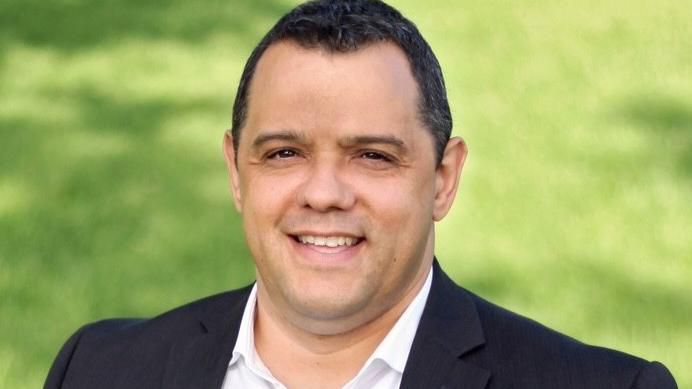Purification Technology on the International Space Station
Published on by Water Network Research, Official research team of The Water Network in Technology
Aquisense Technologies is part of a program to purify waste water on the ISS using ultraviolet light.
A Greater Cincinnati company has been tapped to tackle an often-overlooked but vital component on the International Space Station with an eye on participating in the mission to Mars.
Florence-based Aquisense Technologies is part of a program to purify waste water on the ISS using ultraviolet light. Currently, water treatment on the space station is only 88 percent efficient, meaning 12 percent of the water taken aboard becomes unusable.
Aquisense is joining the effort for the ISS with hopes of being a part of the 2020 mission to Mars.
 Aquisense is the first company in the U.S. to commercialize the ability to purify water using LED lights. For some context and history, that had been done using chlorine for the last 150 years, which can lead to a bad taste and chemical byproducts in the water. But then it was discovered that ultraviolet light could also purify water by breaking down the DNA of harmful impurities like E. coli.
Aquisense is the first company in the U.S. to commercialize the ability to purify water using LED lights. For some context and history, that had been done using chlorine for the last 150 years, which can lead to a bad taste and chemical byproducts in the water. But then it was discovered that ultraviolet light could also purify water by breaking down the DNA of harmful impurities like E. coli.
Aquisense CEO Oliver Lawal explained to me that traditional UV water purification is still expensive and inefficient. UV bulbs used to purify water are big and fragile and contain toxic mercury. The facilities that house the bulbs are too big to use in everyday appliances like drinking fountains or refrigerators, so they could be used to purify the water coming into a house, for instance, but not in appliances. And on top of that, the traditional bulbs take 10 minutes to warm up, can only be turned on four times a day and need to be replaced annually.
Light-emitting diodes, or LEDs, seemed to be a natural fit for making UV light to purify water. That was made possible by the 1992 invention of blue LEDs by two Japanese scientists. Previously, LEDs had been red and green. The invention of blue LED, which won the scientists a Nobel Prize in 2014, paved the way for many modern innovations we now almost take for granted, such as smartphone screens or flat-screen TVs.
"Cellphones are very important, but we think water is more important," Lawal said. "You can live without your cellphone, but it's the same technology."
Around 2008, when LED was discovered to be a natural fit for purifying water, it was almost prohibitively expensive. To start, the LED technology itself was expensive. And it took 1,000 LED lights to be half as powerful as a mercury bulb, Lawal said.
"Watching this, it was a semiconductor, so we knew it had to win," he said. "Semiconductors have never lost a fight."
Lawal got his start in the industry as the president of Acquianics in Erlanger. It was his job to look for new means of purifying water. In that capacity, he discovered a startup company out of North Carolina that was making UV using 20 times fewer LEDs. He invested in that company, and in 2012 it made its first UV LED water purification system. That system cost $12,000 versus the $500 a mercury bulb system would cost, but it was less than one-quarter the size and the LED lights last more than 10 times longer.
In 2015, Lawal bought the North Carolina company and formed Aquisense Technologies. They've continued to refine the technology and have produced a new unit that is one-10th the size of a mercury bulb unit and costs only $1,000.
While that's still twice as expensive as a mercury bulb unit, it will last up to 10 years and uses much less energy. The LED unit is also small enough to be placed in a drinking fountain or fridge or in swimming pools. It turns on instantly, rather than needing 10 minutes to warm up, and can be used on demand rather than four times a day.
The Aquisense unit is used in Danish hospitals in surgery rooms to purify water used to keep surgery patients' body temperatures constant and in retirement homes where elderly patients susceptible from Legionella are in hot water tanks. It's also sold to a lot of people who live off the grid because it can be powered by a car battery and provides clean water without needing to boil or use iodine.
That's what makes it attractive for the ISS: It's much more efficient than the 88 percent achieved with chemicals. Same for the mission to Mars: It's not practical to transport all of that water to Mars if you're losing 12 percent every time you process it.
"Why we care about Mars, it's not for the vanity," Lawal told me. "I mean, that is really cool. But ultimately it's about the 5 billion people on the planet who can't access affordable clean drinking water. If we can help develop the technology from the richest 1 billion, we can help everyone."
Source: Cincinnati Business Courier
Read More Related Content On This Topic - Click Here
Media
Taxonomy
- UV Disinfection
- Purification
- Water Purification